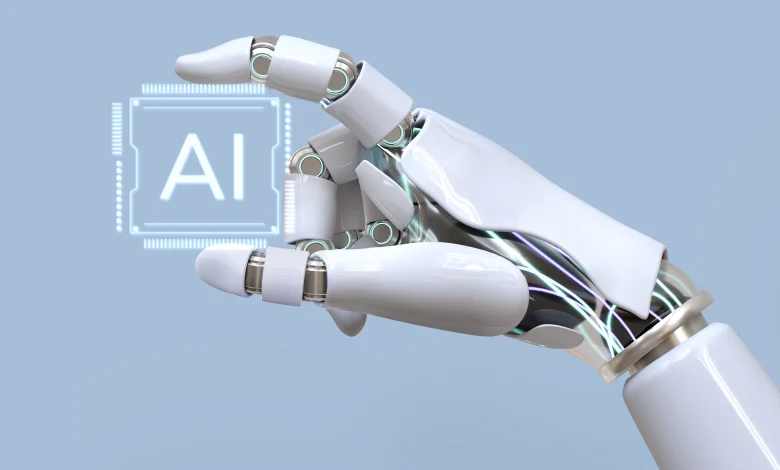
Embodied Artificial Intelligence refers to intelligent systems that are physically situated in the real world and capable of interacting with their environment through sensors and actuators. Unlike traditional AI systems that exist purely in digital or simulated environments, embodied AI systems learn through direct physical interaction—much like humans or animals—by perceiving, moving, and acting in response to stimuli.
2. Core Principles and Supporting Technologies
2.1 Embodiment
The foundational concept that cognition arises from an agent’s physical interaction with its environment. Embodied agents possess a physical form (“body”) that allows them to navigate and manipulate the world.
2.2 Multimodal Perception
Combining multiple sensory inputs—vision, audio, tactile feedback—to form a richer, more accurate understanding of the environment.
2.3 Reinforcement Learning (RL)
A learning paradigm where agents improve their performance over time by receiving feedback (rewards or penalties) based on their actions, critical for physical skill acquisition.
2.4 Simulation and Mixed Reality
Environments like MuJoCo, AI Habitat, or Isaac Sim enable safe, scalable training of AI models in virtual scenarios before deployment in real-world applications.
2.5 Human-Robot Interaction (HRI)
Effective embodied AI systems require natural interaction modalities with humans, including spoken language, gestures, and emotional recognition.
3. Embodied AI vs. Traditional AI
| Aspect | Traditional AI | Embodied AI |
|---|---|---|
| Environmental Context | Digital/Abstract | Physical and Real-world |
| Input Sources | Text, images, structured data | Multisensory: vision, sound, touch |
| Learning Modality | Supervised learning | Reinforcement & unsupervised learning |
| Physical Presence | None | Present via robots or drones |
| Application Domains | Language models, analytics, vision | Robotics, autonomous systems, logistics |
4. Benefits and Challenges
Benefits:
-
Grounded Learning: Learning through direct experience leads to deeper understanding.
-
Human-like Interactions: Embodied systems can engage in more intuitive, natural communication.
-
Broader Use Cases: Enables applications in physical domains such as healthcare, manufacturing, and delivery.
Challenges:
-
Physical Complexity: Real-world interactions introduce unpredictable variables.
-
High Development Costs: Building and training embodied systems is resource-intensive.
-
Safety and Ethics: Misbehaviors in physical systems may pose risks to humans and infrastructure.
5. Key Real-World Applications
5.1 Domestic Robotics
Robots such as Amazon Astro or Roborock navigate homes, perform chores, and offer security and companionship.
5.2 Autonomous Vehicles
Self-driving cars (e.g., Waymo, Tesla) embody AI principles by perceiving their surroundings and acting in real-time.
5.3 Drone-Based Delivery
In urban China, companies like Meituan and JD.com deploy drones to deliver food and goods autonomously.
5.4 Healthcare Robotics
AI-powered robots (e.g., Moxi by Diligent Robotics) assist in hospitals by transporting medicine, supplies, and even aiding patient care.
5.5 Industrial Automation
Embodied AI in robotic arms automates complex assembly, inspection, and packaging tasks with high precision.
6. China’s Strategic Role in Embodied AI
6.1 Real-World Integration
China is leading the deployment of embodied AI in public life:
-
Food Delivery Robots: Widely used in major cities like Beijing and Shanghai, where they operate on streets and university campuses.
-
Service Robots in Transit Hubs: Guiding passengers, answering queries, or providing security at airports and subway stations.
6.2 National Infrastructure Support
-
5G Networks: Facilitate ultra-low latency communication between robots and cloud-based control systems.
-
Government Initiatives: Programs such as “Made in China 2025” prioritize intelligent robotics and AI as national strategic industries.
-
Academic and Industrial Ecosystem: Institutions like Tsinghua University and tech giants like Huawei are spearheading R&D in embodied intelligence.
7. The Future of Embodied Artificial Intelligence
-
Social Robotics: Growing interest in robots capable of emotional interaction with humans, such as Nao and Pepper.
-
Ethics of Embodied AI: The importance of addressing concerns related to privacy, safety, and reliability.
-
Integration of Large Language Models (LLMs): For example, incorporating GPT into embodied conversational agents to enhance understanding and interaction.
-
Toward Generalization: Developing systems able to perform multiple tasks across diverse environments, beyond today’s specialized agents.


